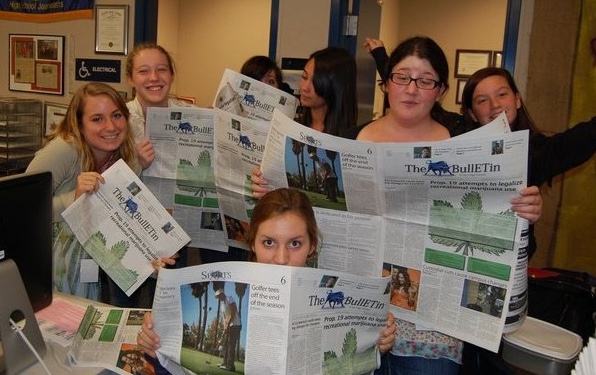When I go to Reseda Charter High School this month for the 70th anniversary, I’ll interview the school’s librarian. (The interview will be in a future issue of my newsletter. You can subscribe here.) One of the things we’ll discuss is media literacy and the importance of identifying bias.
When I was at Reseda in the 1970s, there were only three commercial television networks and PBS, along with several daily newspapers, and AM news radio stations. All of them had dedicated newsrooms that followed strict journalism practices and ethics. While each competed to scoop each other with the latest news, they also had to make sure it was accurate to avoid embarrassment or getting sued for libel. As a result, the news was able to give us an objective reality that exposed the failures of the Vietnam War and the Watergate scandal. As the saying goes, “Everyone has the right to their own opinion, but not their own facts.”
Fifty years later, reliable sources of news are nearly impossible to find. The multitude of cable news channels and social media platforms aren’t designed to inform people, but to tell them what they want to hear. Watch Fox News or MeidasTouch, and you’ll get a completely different picture of reality. This problem is further exacerbated as once dependable media outlets are controlled by large conglomerates that are either aligned with the current administration or sued into compliance. What you won’t get is journalism.
That’s why one of the ways we can help young people battle media bias is to teach them the fundamentals of journalism.
At Reseda, I was on the staff of the Regent Review newspaper. That’s where I learned the fundamentals of journalism. Who, what, where, when, how, and why. Fact-checking. Interviewing. Ethics. I also learned about producing publications on a tight deadline. At the Regent Review, I learned research and production skills I’m still using in my career today.

I also showed off my artistic skills as an editorial cartoonist. When my daughter went to El Toro High School, she followed in my footsteps by joining the staff of their campus newspaper, the BullETin. Here are our editorial cartoons, separated by 32 years.

Print newspapers may have gone the way of the mixtape, but the fundamentals of journalism still apply to video, websites, and social media. With the rise of the citizen journalist who can livestream news as it happens, it has become even more important for everyone to learn about journalism.
My novel, Christina’s Portrait, is about three Reseda students who become good video journalists. They learn how to track down leads, conduct interviews with follow-up questions, talk to people with opposing views, fact-check, follow journalism ethics, and confront their own biases. As a result, they produce a documentary that not only reveals a tragedy and secrets that have been hidden for over 40 years, it offers healing for those affected and for themselves as the video’s creators. It reminds us learning is reinforced by doing.
The truth shall set you free, and journalism is the process for uncovering the truth. By teaching young people the fundamentals of journalism, not only can they free themselves from media bias, they can identify what is actually happening and use that knowledge to make the world better. As older generations, we have the responsibility of teaching young people these vital skills and to listen to what they find.



